Tibet Tea Horse Road
Tibet Tea horse road is the oldest trade route in Tibet, stretching from China to India via Tibet. It was not only the trading route but also represented the cultural bridge.
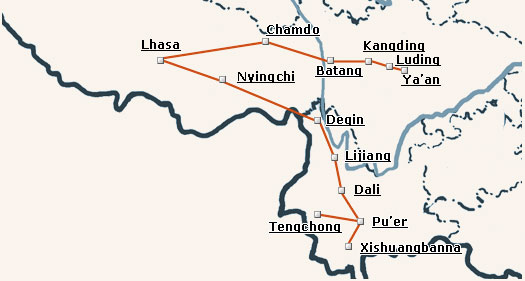
Table of Contents
A brief history of Tea horse road
According to history, tea was introduced in the Tibetan area during the Chinese Tang dynasty. During the 34th king of Tibet, the Tibetan aristocracy started to drink tea and use tea bowls, and tea was classified into different categories.
The Tibetan people had been in close communication with the Tang and the various ethnic groups of southwest China for a long time, so, likely, the tea of Sichuan and Yunnan had already reached Tibet. As early as the seventh century, Tibetan military power had conquered the ethnic tribes scattered in the present areas of Lijiang and Dali, Yunnan, and had established a military administration in northwest Yunnan.
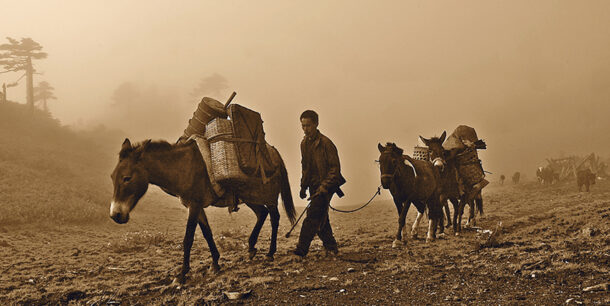
The military route used by the Tibetans to reach Yunnan was closely related to the contemporary tea and horse route. Today’s Yunnan Province is one of the oldest places where tea plants are cultivated in the Nannuo mountains and Bada mountains of Mengla County. The Tibetan military government had a very close relationship with the Nanzhao kingdom, and it is possible that Yunnan tea was introduced into Tibet during that time.
The ancient passageway once stretched almost 2600 km across the chest of Cathay, from Yunnan, in the tea-growing region of Sichuan Province, to Lhasa, the almost 3600 m high capital of Tibet. The development of large-scale commerce in tea and horses between the Chinese dynasties and Tibet and the development of the caravan road for the tea and horse trade probably dates to the Song dynasty. During that period, the demand for tea would have gradually increased as tea became an important drink in the daily life of the Tibetans. The Song required many warhorses from Tibet to defend against the invading northern nomadic Liao, Jin, and Xixia.
The court established the Chamas, Tea and Horse Office, in charge of the tea and horse trade in the seventh year of Xining (1074), and also set up many markets for selling tea and buying horses in Northwest China. Every year the government transported huge amounts of tea, obtained mainly from Yunnan and Sichuan, to exchange for warhorses with the Tibetan tribes. According to one study, more than 20,000 warhorses per year were exchanged for tea during the Northern Song (960-1127) dynasty.
At first, through the government bureau, but later it gradually was handled by individual traders. The most prosperous tea and horse trade period between Yunnan, Sichuan, and Tibet were under the Ming dynasty. Given the importance of tea in the daily life of the Tibetans, the Ming court was able to use the tea trade to maintain some political control over the Tibetan leaders and lamas.
But during the Qing dynasty tea trade continued to develop between Yunnan, Sichuan, and Tibet even though the court stopped buying horses from the Tibetan area in 1735. In 1661, the fifth Dalai Lama asked the Qing court to set up a large market for the tea and horse trade in Beisheng (present Yong-sheng, Yunnan), and the central court approved his request. There was a rapid increase in the amount of Yunnan tea transported to Tibet along with the Tea and Horse Road from that time.
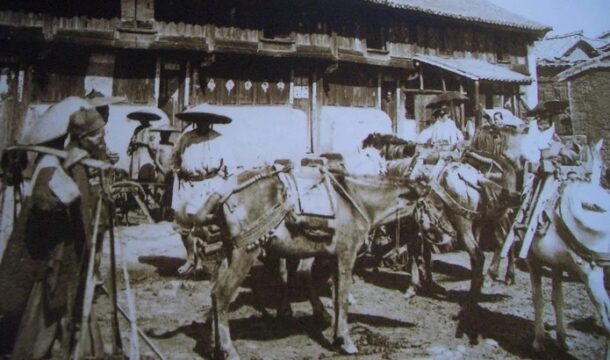
But later, everything was contracted or bought outright that could be conveniently carried by yak or mule. Sewing machines, textiles, cases of the best cigarettes, both British and American, whiskies and gins of famous brands, dyes and chemicals, kerosene oil in tins, toilet and canned goods, and a thousand and one varieties of small articles started flowing in an unending stream by trail and truck to Kalimpong, to be hastily repacked and dispatched by caravan to Lhasa.
The least fragile goods were set aside for the northern route to Dhartsedo or Kangding to be transported by yaks; other articles were packed for delivery at Likiang, especially the liquors and cigarettes worth their weight in gold Kunming with thirsty American and British troops.
Significance of Tibet tea horse road
While modernization undermined this historic route’s commercial significance, the Tea and Horse Road is attracting attention due to tourism growth in southwest China. One reason is the ethnic and cultural diversity of the region. Even the locals said that after two kilometers, each there is a different language, and after five kilometers, there are different customs.
There are more than twenty different ethnic groups to be found along the route. Some famous old towns and villages were once key stations and marketplace of Tea Horse road. For example, the Lijiang, where the Naxi people are the majority of inhabitants, was designated as a world cultural heritage site by UNESCO in 1997. The Sidengjie village, Shaxi Township in Yunnan Province, was listed as the protected world Architectural heritage site by the World Architecture Foundation.
Cultural Bridge
Moreover, the Tea and Horse Caravan Road continues to be a sacred road for many people. The different religions along the road include, for example, the white, yellow and red sects of Tibetan Buddhism; the Bon religion of pre-Buddhism in Tibet; the Dongba religion of the Naxi people, which combines Bon, Buddhism, and its own animism; Han Buddhism and Taoism, as well as the Hinayana belief of the Dai people, and the Benzhu (local gods and goddess) worship of the Bai people.
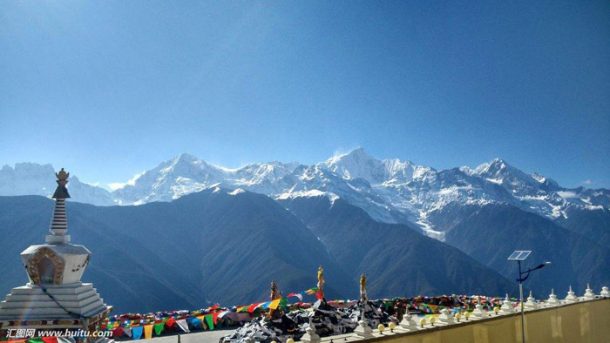
Along the caravan road, many sacred mountains are belonging to different ethnic groups. For example, Kawa Karpo snow mountain is located near Yubeng in the northern Yunnan Province and is elevated at 6740m above sea level. It is one of the most famous sacred mountains of Tibetan people. Every year many pilgrims from Sichuan, Yunnan, Qinghai, Gansu, and Tibet Autonomous regions worship and circumambulate the mountain with their tents, sheep, and horses to ask for blessings from the mountain god.
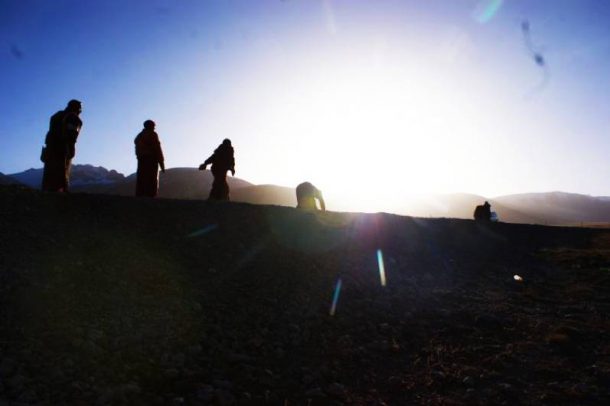
Pilgrims still travel annually to Lhasa to pay their respect to the deities of Buddhism, often travel measuring the road by prostrating their bodies along its length. The road these pilgrims follow is Tea-Horse Road. Along the Tea Horse road, there are so many historical landmarks and sacred sites of Tibetan Buddhism.
Recent Posts
Can Tourists Visit Tibet?
Exploring the Beauty of Tibetan Handicraft
The Ultimate Guide to Tibet Tours, Travel, and Trekking Adventures
All Categories
- About Tibet
- book a Tibet tour
- Buddhism Practice
- Budget Tour
- China-Tibet Train
- Customized Tibet tour
- Historical Sites
- Hot Springs in Tibet
- News
- Photography in Tibet
- Tibet attraction
- Tibet Group Visa
- Tibet Motorcycle Tour
- Tibet Small Group Tours
- Tibet Tours and Tibetan Tour Guide
- Tibet Train
- Tibet Travel FAQs
- Tibet Travel Information
- Tibet Travel News
- Tibet Travel Permit Update
- Tibet Travel Prices Rises
- Tibet Trek
- Tibet Trekking Tour
- Tibet weather and climate
- Tibet Wildlife animals
- Tibet Winter Tour
- Tibetan Buddhism
- Tibetan Cultural Features
- Tibetan Culture and Poeple
- Tibetan Festivals
- What to see in Tibet


